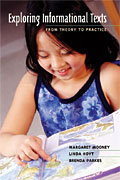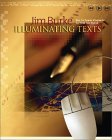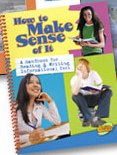Informational texts include the following media examples: news; magazines; advertisements/commercials; documentaries; and movies. Are you up-to-speed on how to teach with and about them? Having your students analyze and deconstruct these types of texts is increasingly important and relevant in a 21st century classroom. In addition, you will find more resources on my Close Reading of Media Texts web page. Contact me for information about professional development workshops.
Here are the pages on the Media Literacy Clearinghouse which deal with informational texts:
Journalism/News; Advertising; Commercials; Visual literacy; Motion Pictures; Documentaries

Source: http://t4.jordan.k12.ut.us/cbl/images/litfac/binfo.pdf
“Informational Texts” by Dr. Brenda Parkes,
(Note: hyperlink embedded below added by media educator Frank Baker)
To become effective readers of informational texts, students need to understand:
• the features that identify nonfiction writing;
• the selective way nonfiction is read according to the reader’s purpose;
• the ways organizational features such as indexes, content pages, glossaries and headings help the reader access the text;
• the specialized language and language structures used to convey information;
• how visual literacy such as photographs, diagrams, maps and charts combine with written text to convey information;
• how information in captions and labels combines with running text to convey information; and
• strategies for using prior knowledge and experience to engage in inquiry.
Source: http://www.dpi.state.nc.us/docs/parents/resources/makingthegrade/2004fall.pdf
Other recommendations:
Using Text Features to Locate Essential Information from Texts
Informational Text Features
Talking About Visual Texts With Students




